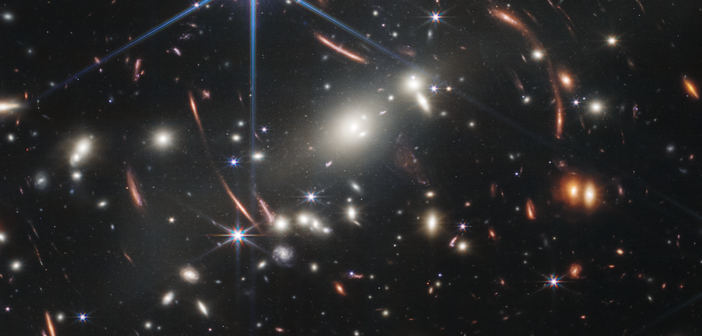Editor’s Note: In these last two weeks of 2022, we’ll be looking at a few selections that we haven’t yet discussed on AAS Nova from among the most-downloaded articles published in AAS journals this year. The usual posting schedule will resume in January.
The Sparkler: Evolved High-Redshift Globular Cluster Candidates Captured by JWST
Published September 2022
Main takeaway:
Lamiya Mowla and Kartheik Iyer from the University of Toronto, Canada, led an analysis of JWST observations of the SMACS J0723.3-7327 field — the first JWST image ever released. The team focused on multiple compact sources surrounding a strongly lensed galaxy in this image. These compact sources, dubbed “sparkles” by the research team, are likely globular clusters.
Why it’s interesting:

Left panel: Portion of the SMACS J0723.3-7327 field with the three images of the Sparkler labeled. Panels 1, 2, and 3: Close-ups of each of the three images of the Sparkler. Click to enlarge. [Mowla et al. 2022]
What the Sparkler can tell us about globular cluster formation:
The timeline for the formation of globular clusters is uncertain, with competing theories suggesting that they either require the particular conditions present very early in the universe to form, or they form continuously as galaxies evolve. Given the red color of these clusters and their lack of star formation, Mowla and Iyer’s team suggest that these clusters are highly evolved, with an age of 3.9–4.1 billion years. This means that the clusters formed at a redshift of 7–11, corresponding to when the universe was roughly 400–800 million years old, shortly after the first stars began to shine. While more analysis of these observations is required to fully understand the nature of the sparkles, early results suggest that globular cluster formation coincides with the earliest stages of galaxy assembly.
Citation
Lamiya Mowla et al 2022 ApJL 937 L35. doi:10.3847/2041-8213/ac90ca
